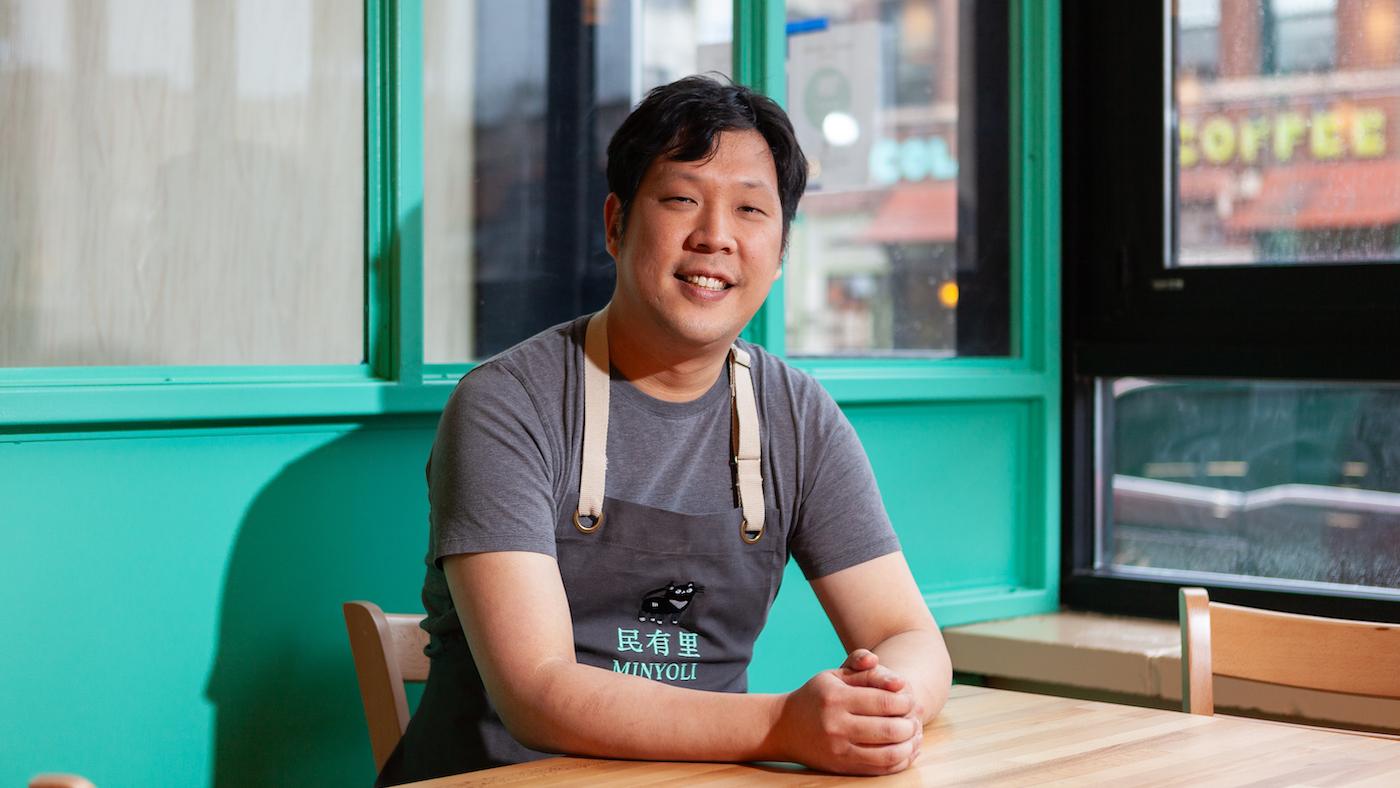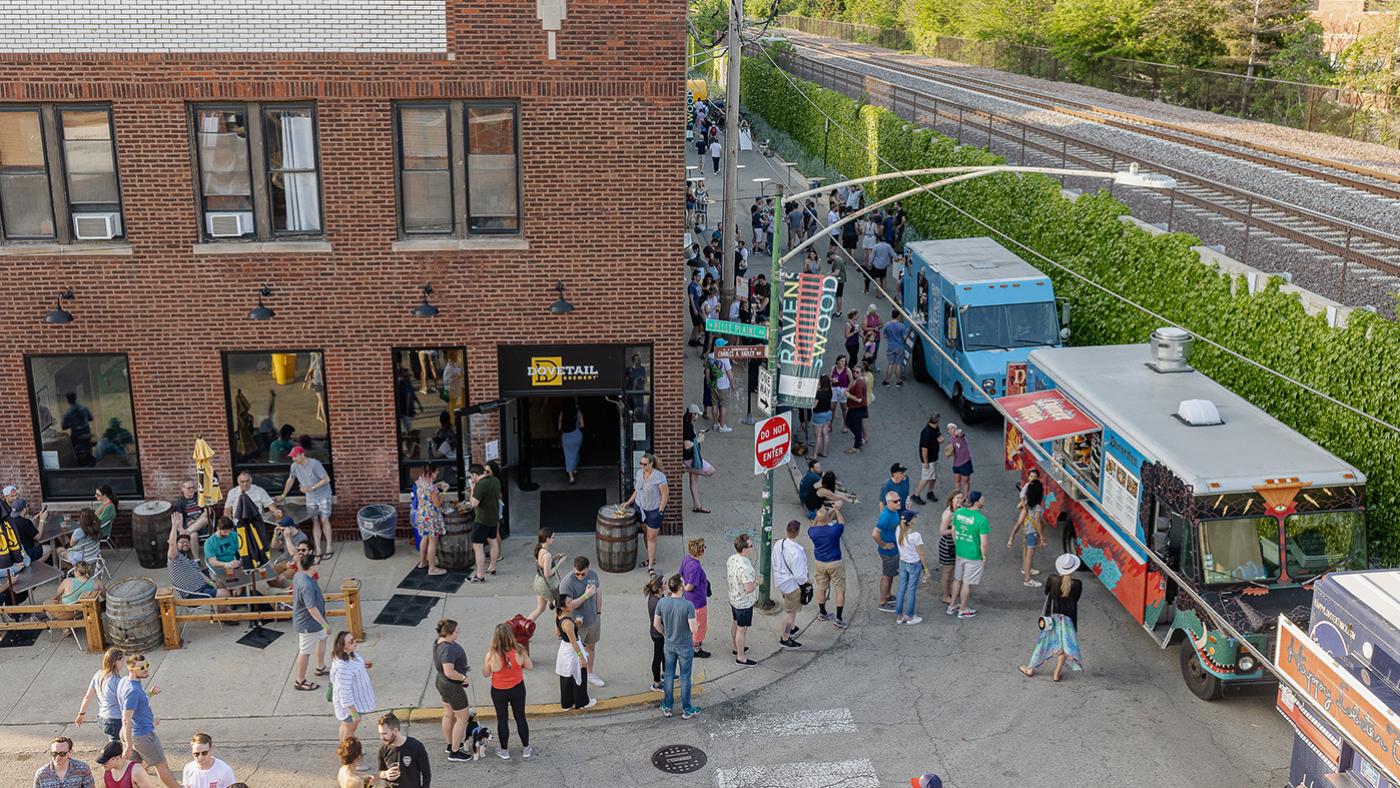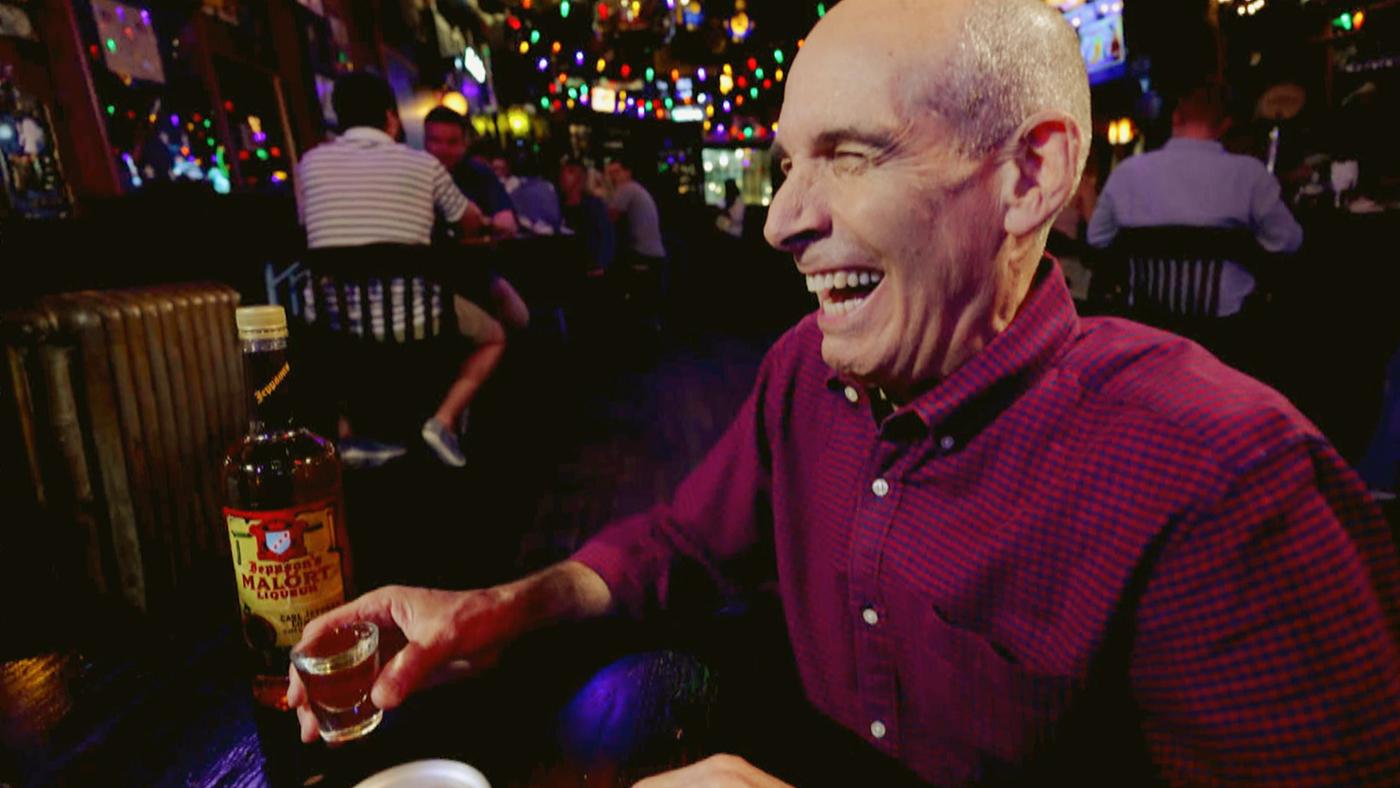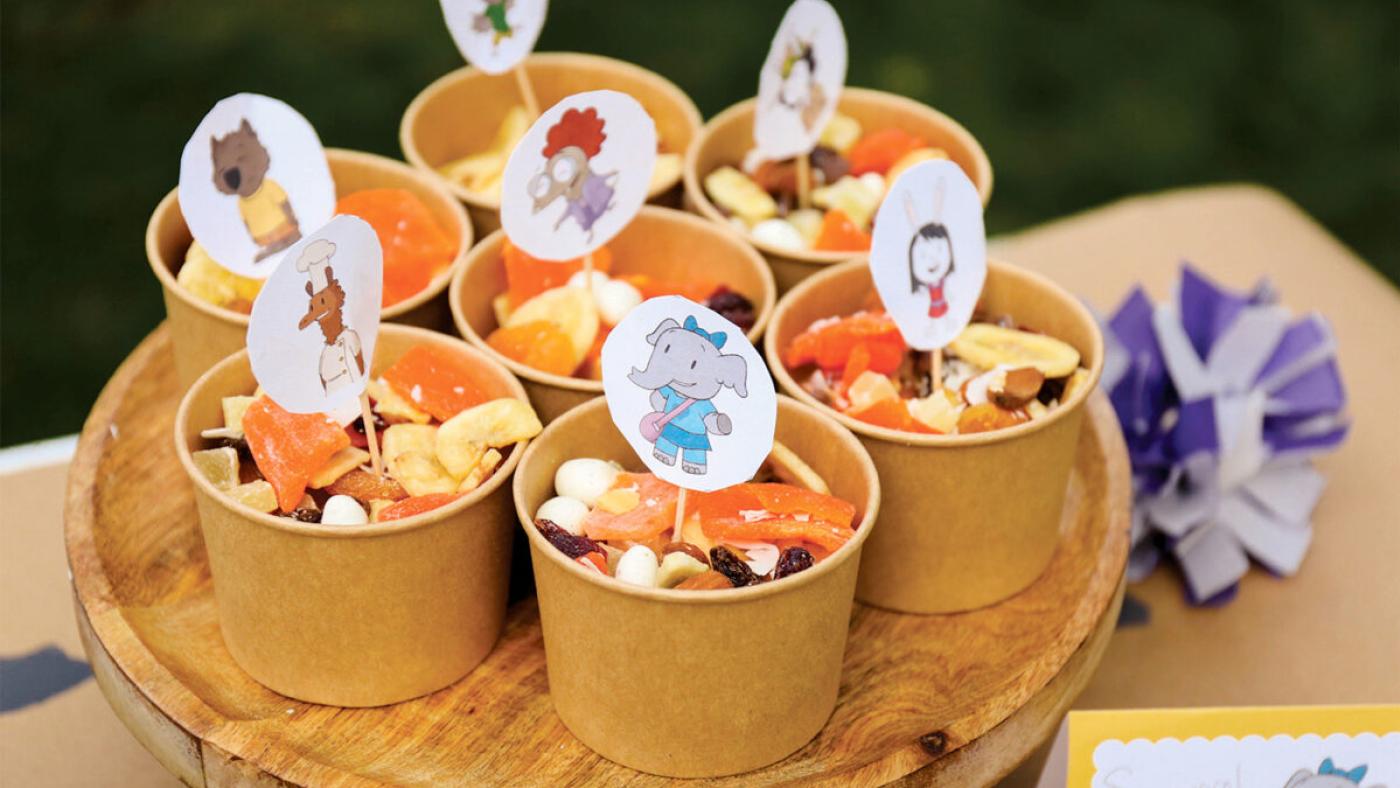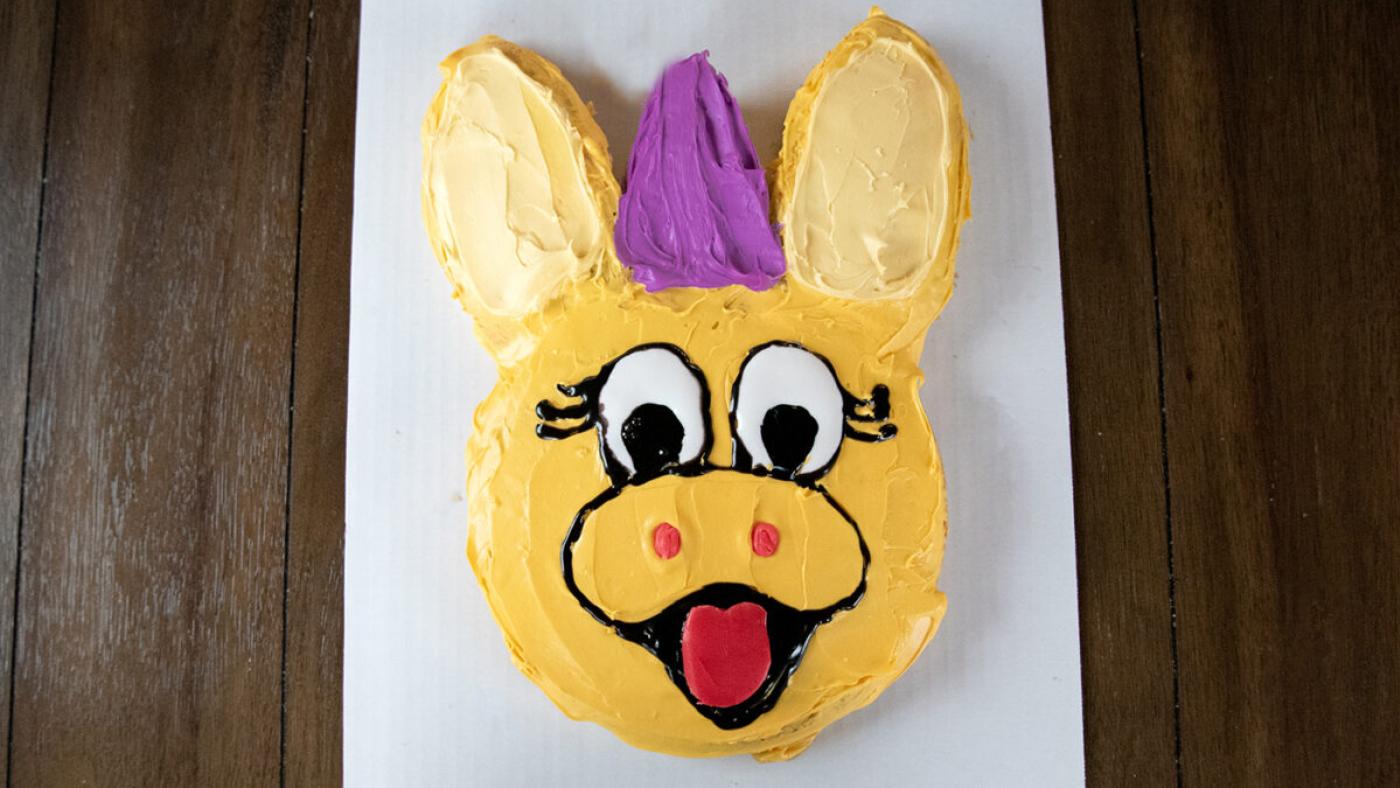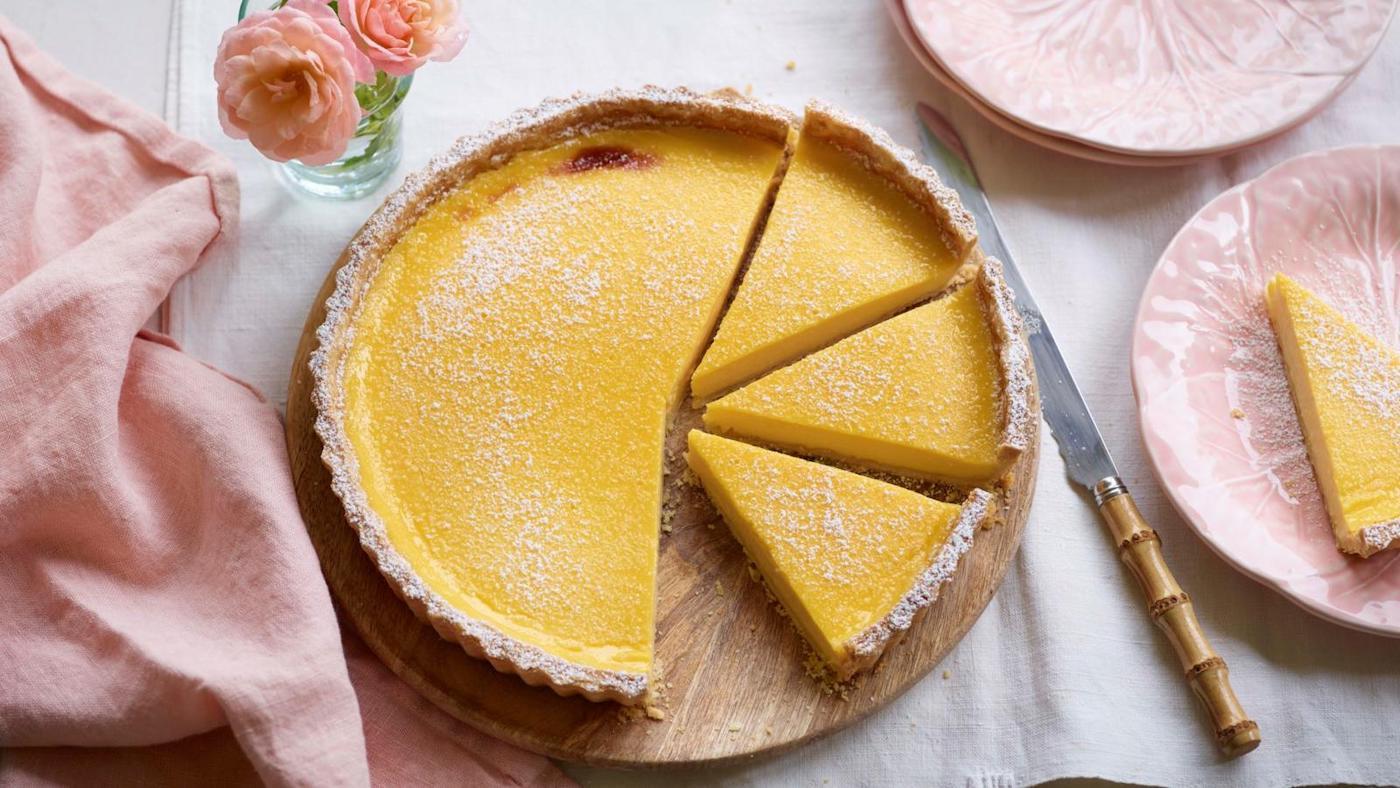Four Years After Marijuana was Legalized in Illinois, Cannabis-Infused Food and Drink is All Grown Up – And Still Has a Ways to Go
Maggie Hennessy
April 19, 2024

Get more recipes, food news, and stories by signing up for our Deep Dish newsletter.
Ed Marszewski has something of an obsession when it comes to beverage innovation. It dates back to his homebrewing days after he and his brother Mike took over Maria’s Packaged Goods & Community Bar from their mom in 2010. Since the brothers opened Marz Community Brewing Co. in 2013, they have unleashed hundreds of beers incorporating everything from tea and syrups to red koji rice and peach pits.
“A lot of what we do is based on this idea that, ‘No one making interesting X beverage yet in Chicago; why don’t we try?’” Ed Marszewski, who is now the president of Marz, says. “If people like it, we’ll keep going.”
The brewery employed a non-alcoholic brewmaster, Joe Guzzo (who has since left), years before the spirit-free category’s ascendency in the mid-2010s, and released sparkling yerba mate, canned cold brew, and shrub sodas.
Meanwhile, on trips to states like California, where recreational weed was already legal, Marszewski couldn’t help but notice that hemp-infused beverages were on the rise – and still “all kind of tasted like sh-t.”
When the U.S. Congress passed the most recent omnibus Farm Bill in 2018, it spurred the creation of a multibillion-dollar market of intoxicating hemp-derived CBD and THC products that are federally legal – perhaps inadvertently – by bringing back industrial hemp as an agricultural product. (Both marijuana and hemp come from cannabis plants, but hemp contains 0.3 percent THC or less. Anything with a higher amount of THC is considered marijuana). Marz, like a lot of other small producers, pounced. First came Flower Power, a soothing seltzer flavored with chamomile, citrus, and bergamot, and spiked with 20 milligrams of hemp-derived CBD. In the four years since recreational marijuana was legalized in Illinois, Marz has released over a dozen cheekily-named, CBD- and THC-infused beverages, including Unholy Water – sparkling water spiked with 10 milligrams of Delta-9 THC – and apple-flavored High Pie shrub soda charged with 25 milligrams of THC.
“The fun part, the best part, is how do you design something that really tastes great and is palatable to a larger audience?” Marszewski says. “We’re Malört heads here; we’ll go dirty and dark if we want to, but we still gotta pay insurance bills and keep everyone employed. Everything is led by what our customers want.”
More Choice?
Since the legalization of recreational marijuana in Illinois in 2020 brought broader cultural acceptance, stricter guardrails, and a flush of capital to recreational cannabis – which reached a whopping $1.6 billion in sales in Illinois last year (up from a record-breaking $1.5 billion in 2022) – the bar has gotten higher on cannabis-infused food and drinks and the range and nuance of experiences they deliver. Gone are the days of dodgy pot brownies and skunky-tasting gummies hacked into microscopic pieces. Now, Chicagoans can wind down before bed with an impeccably dosed 2.5-milligram glazed orange gummy created by award-winning pastry chef Mindy Segal, or sink into a cerebral high via Community’s vanilla-dark chocolate bars that also contain functional mushrooms (made by Black women-owned cannabis company OURS). People can microdose 10 milligrams in a Poppin’ Pistachio latte at Wake-N-Bakery cannabis bakery and cafe, or crack a tiny can of Choom, THC-laced sparkling lemon-lime beverage from Hopewell Brewing in Logan Square. They can shake cannabis-infused buffalo sauce from Wicker Park sports bar the Fifty/50 on their chicken wings (well, until it sold out, that is). Hell, folks can even bake their own perfectly calibrated THC-laced confetti cake (that’s also vegan!) from Fifty/50 Group’s West Town Bakery.
Yet as consumer choice swells in the shadow of vertically integrated, multi-state organizations (MSOs) such as Cresco Labs, Curaleaf, and Ascend Wellness, it’s worth reflecting on those the industry is still leaving out. One of the goals of legalizing cannabis in Illinois was to help repair the disproportionate damage mass cannabis convictions have caused to people of color, which informed how the legislation was designed. Taking flak after the first cannabis businesses to open in 2020 were all majority white-owned, the state launched a social equity program in 2021, connecting people and communities historically impacted by criminalization to business ownership opportunities in legal cannabis. According to state data from 2020 to 2023, Black-owned cannabis companies increased from 0 to 27 percent, Latino-owned companies climbed from 0 to 5 percent, and women-owned companies increased from 3 to 16 percent. However, critics argue that the state has not followed through on providing funding to dispensary license holders; and, indeed, raising capital remains one of the biggest barriers to entry. (Even with the reduction in application fees for social equity participants, opening and running a dispensary can cost hundreds of thousands of dollars, for one.)
“I know the governor and everyone who designed the legislation wanted to provide opportunities for those who’ve been disproportionately affected,” Marszewski says. “But it’s so prohibitive for most people to get involved.”
There’s an ongoing push, too, from lawmakers and those in the cannabis industry for the regulation of products containing delta-8 THC – a psychoactive chemical found in the Cannabis sativa plant, which some claim is milder and therefore produces a lesser high than delta-9 THC (the more common form that gives consumers a high). The Cannabis Business Association of Illinois (CBAI) and some Illinois lawmakers have recently called for stricter regulation on delta-8 products, with a chief complaint being the marketing tactics of some products, which bear striking resemblance to common candy brands and other snacks. The CBAI also argues that these products did not have to jump through the same painstaking regulatory hoops as other legal cannabis businesses. The Food and Drug Administration also issued a warning about an increase in the number of calls to poison control centers from people who had used delta-8 products; the FDA says it has yet to evaluate the safety or marketing claims of some of those products, which for now remain on shelves and menus.
On the Ground Floor, at a Bucktown Restaurant
Any Chicagoan who’s ever had a bad experience with edibles is no doubt grateful that Segal, pastry chef and owner of Mindy’s Bakery, broke into the industry way back in 2014, when Illinois’ medical marijuana bill took effect and recreational weed still seemed but a dream. In fact, when Chicago-based Cresco – now one of the largest vertically integrated MSOs – approached Segal about creating Mindy’s Chef Led Artisanal Edibles, Cresco had not yet made edibles. So Segal sat the team down at the communal table in her since-closed Bucktown restaurant, Mindy’s Hot Chocolate, to taste through her whimsical desserts with the aim of turning them into edibles that would set a new industry bar, thanks to the trust – and sizable research and development investment – in Segal’s product.
“The recipes we used are the ones I used in my restaurant,” Segal says. It started with the brittles she spent years perfecting, like dark chocolate with smoked almond and milk chocolate peanut brittle, which were infused with a flavorless, odorless distillate.
“Everything is different when you’re taking a normal recipe and trying to introduce another oil into it, so to speak,” she says. “The challenge was trying to get the cannabinoid oil to not leach out of the chocolate. It was definitely a learning experience. It takes a village to bring a product to market.”
Mindy’s doesn’t produce nearly as much chocolate as its 2- and 5 milligram-microdose gummies, which again raised the category standard with lush, cheffy flavors like Cool Keylime Kiwi, Lush Black Cherry, and Glazed Clementine Orange.
Cresco has since teamed up with other high-profile restaurant groups like Fifty/50 to develop the THC buffalo sauce (in conjunction with Good News cannabis brand), and Fifty/50 Group’s director of food and beverage Chris Teixeira on a nostalgic line of allergen-friendly, take-and-bake cake and brownie mixes called Cannabis Infused.
“I grew up with cake and brownie mix, and everybody has used them at one point in time,” Teixeira says. “It made sense to offer a cake mix that was infused and still the quality we wanted, as if you’d gotten it from West Town Bakery.”
Once they’d created a satisfactory shelf-stable mix at scale that incorporated unbleached flour and evaporated cane juice, it was a matter of powderizing and incorporating 50 milligrams of THC into each 12-brownie batch of mix or 12-slice, buttery, vegan Cannfetti cake – both without a trace of hempy aftertaste.
“Most people familiar with pot brownies, what you’d often do is infuse the fat,” Teixeira says. “And suddenly you’re eating 50 milligrams thinking it's 5 and becoming very philosophical in your mind. With this, there’s no user error in the process at home.”
The mixes come in a kit with a pan, because when Teixeira was making – ahem, wholesome – brownies in college, he never had a pan, and that’s who he assumed the demographics were. Instead, he’s finding that a lot more customers are proud pan owners in their 30s and 40s, looking for an intoxicating dessert to bring to a dinner party.
Give the People What They Want (Even Terpenes!)
Sometimes it’s hard to separate edibles from their gloriously dank past – and why should we? At its annual 4/20 Dank Magic Marketplace on April 20, Marz debuts its bottled line of technicolor Stupid Sodas (aptly named by sales representative David Weeks), in Purple! and Oooorange flavors. Taking direct aim at the crude, silly end of weed culture, they also indulge our collective, nostalgic love of sugary pop. And while the sodas might seem like yet another example of products masking terpenes (naturally occurring chemical compounds responsible for aromas), Marz has found that the long-held compulsion to suppress this flavor doesn’t hold the power it used to – hence the release of products whose flavor profiles instead complement hemp, like Juniper Terps, Kush Party, and Bong Water.
“Some people want to taste it,” Marszewski says. “So we talk about it and do sensory panels where the peanut gallery chimes in about what they do and don't like. Sometimes we find common ground; other times, it’s ‘Screw you, we’re doing it this way anyways.’”
In fact, such a devil-may-care approach to cannabis drinks bears striking resemblance to a certain craft beverage revolution that began around a quarter century ago, perhaps offering hope to startups still trying to break into that market.
“In a way, our foray into hemp beverages is similar to what the craft beer industry was like in late ’90s, early 2000s, like fighting Goliath,” Marszewski says, nodding back to the pivotal role of the 2018 Farm Bill. “CBD and the Delta-9 realm are a way to kind of balance out the hegemony of those big players and their way of locking out everyone to participate.”
Despite the long climb to federal legalization that remains, he’s optimistic that places like Chicago are helping lay the groundwork. “I believe we’ll get there eventually. Honestly, I never even thought we’d get here in my lifetime.”


